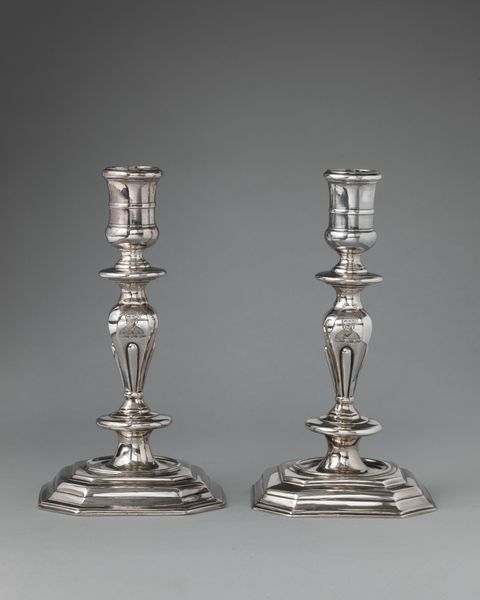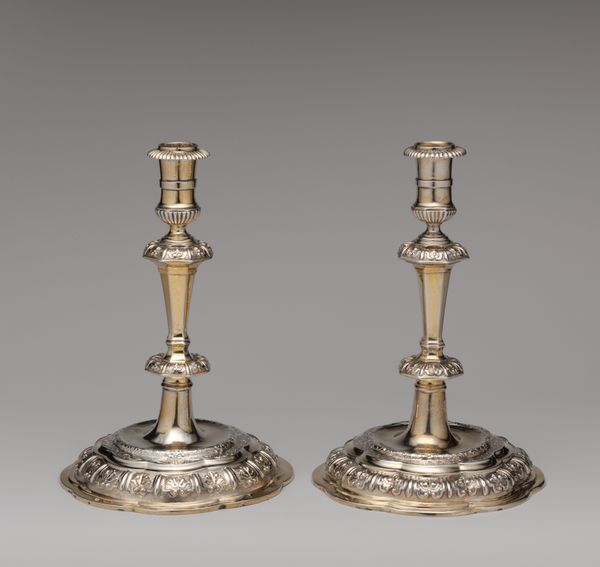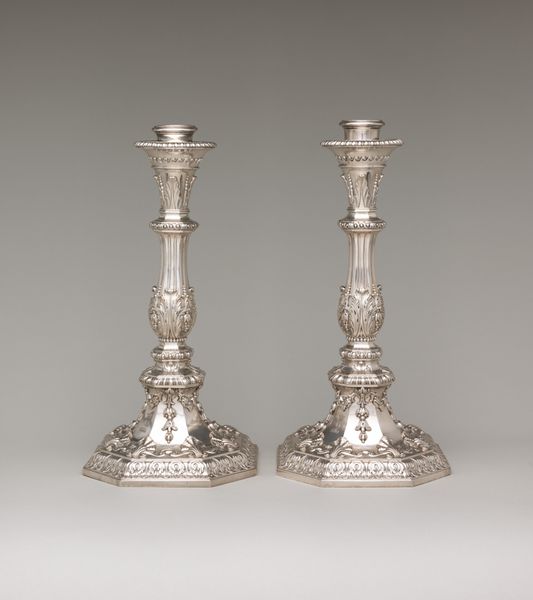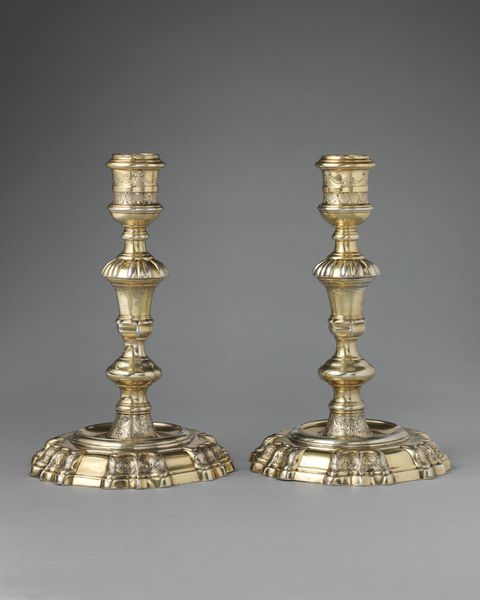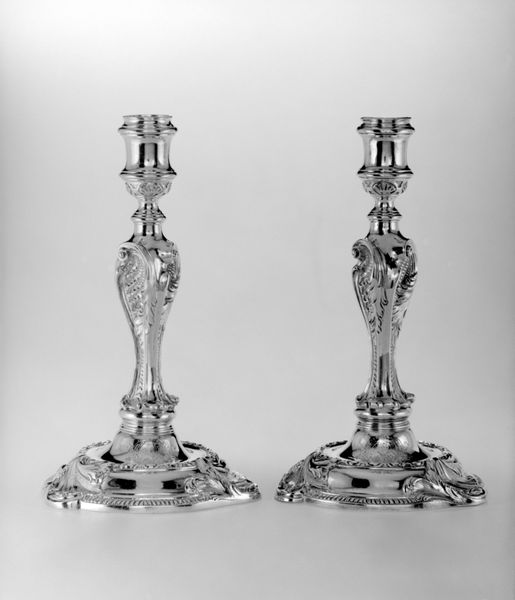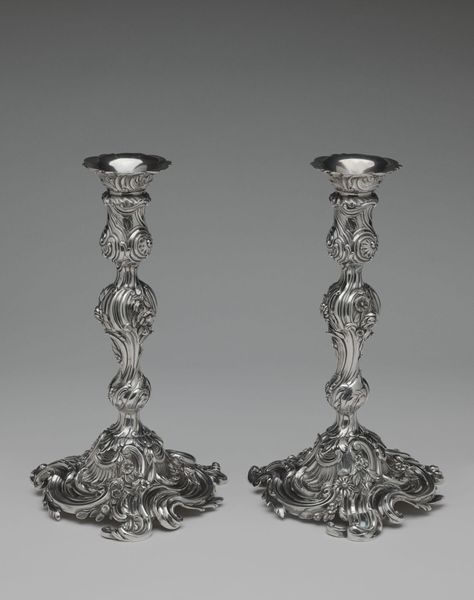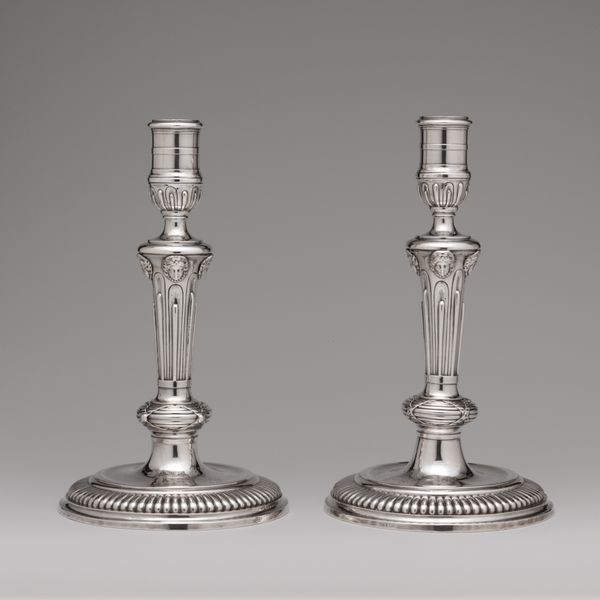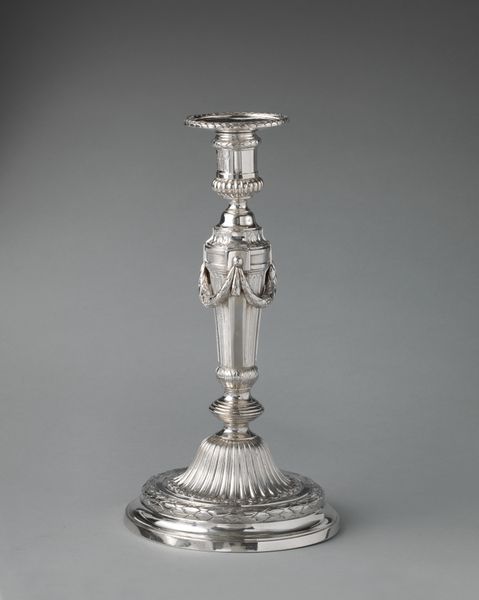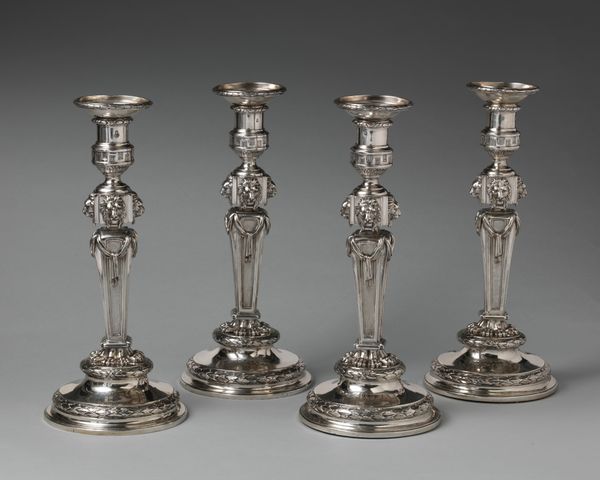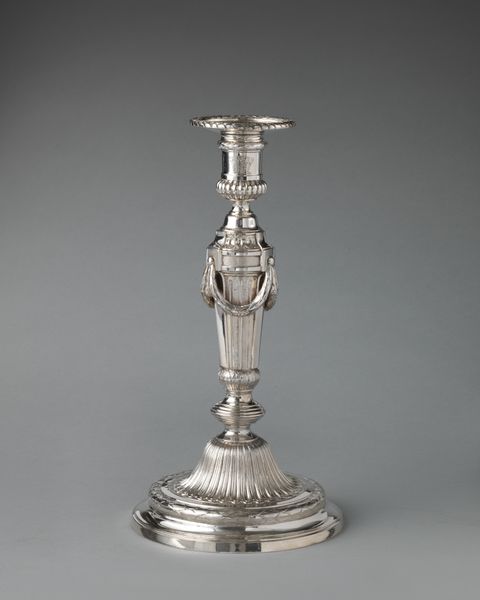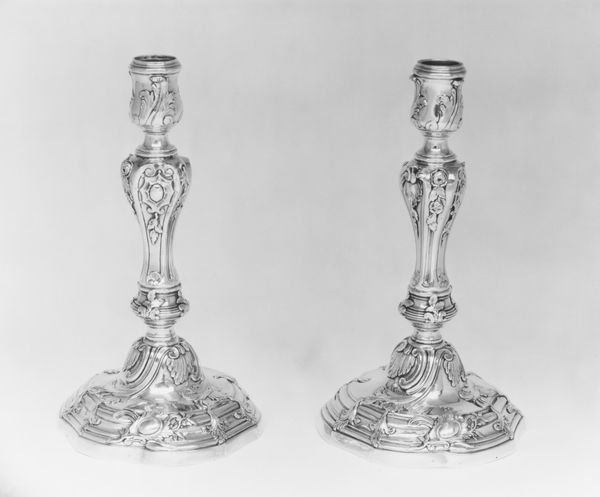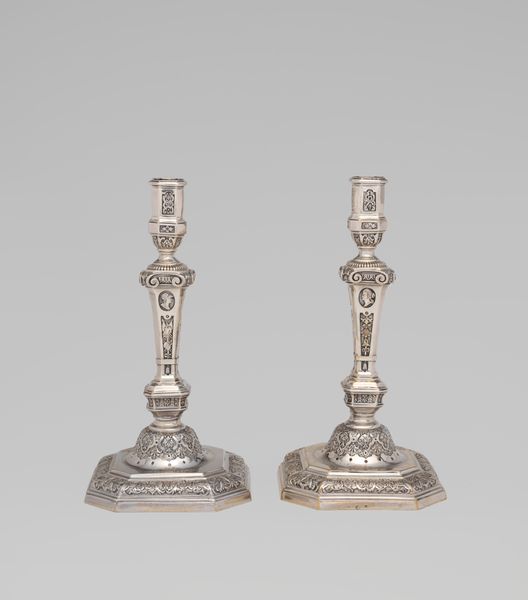
silver, metal, guilding, sculpture
#
silver
#
baroque
#
metal
#
guilding
#
sculpture
#
decorative-art
#
rococo
Dimensions: Height (each): 8 1/2 in. (21.6 cm)
Copyright: Public Domain
Editor: Here we have a pair of silver candlesticks created by Thomas Gilpin between 1745 and 1746. The baroque style immediately catches my eye—such ornate details! They're so much more than just functional objects. What can you tell me about their role and significance within that time? Curator: It's crucial to consider the social role such objects played. These weren't meant for basic illumination. These silver candlesticks signified wealth, taste, and social standing. Owning such exquisitely crafted objects spoke volumes about the patron's place within the social hierarchy of the mid-18th century. Think of the rooms they would have occupied, the light they would have cast on important documents or during sophisticated dinner parties. How do you think their presence affected those social gatherings? Editor: So they weren't just pretty decorations; they were actively participating in shaping the social dynamics of the time! Were specific design elements intended to signal those messages? Curator: Absolutely. The rococo style, with its emphasis on asymmetry and elaborate ornamentation, reflects a desire to display opulence and sophistication. Consider the surface of the candlesticks. Would these have been displayed prominently, in specific rooms? What kind of statement do you think their gleaming surfaces, reflecting candlelight, would have made in a darkened room? Editor: That reflection must have created such an alluring, almost theatrical atmosphere! Thinking about how they functioned within a particular setting, transforming social dynamics by illuminating not just the room but also status, is fascinating. Curator: Exactly! It allows us to understand art's wider contribution to societal power structures, and to better appreciate how artifacts are much more than material forms of aesthetic tastes. Editor: This conversation has certainly altered my perception of decorative arts and their contribution to cultural history. I had originally appreciated them for their aesthetic qualities. Thank you!
Comments
No comments
Be the first to comment and join the conversation on the ultimate creative platform.
